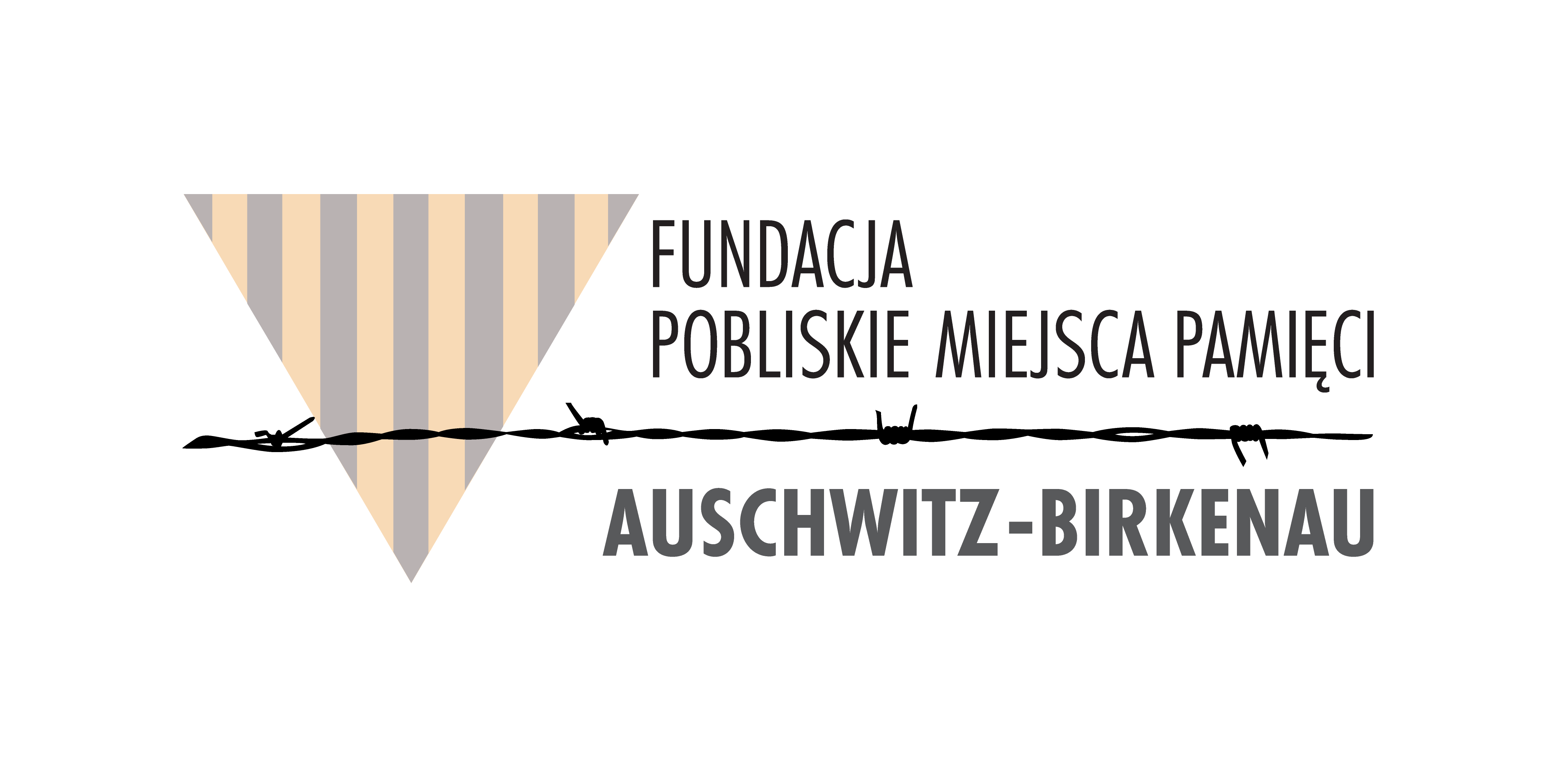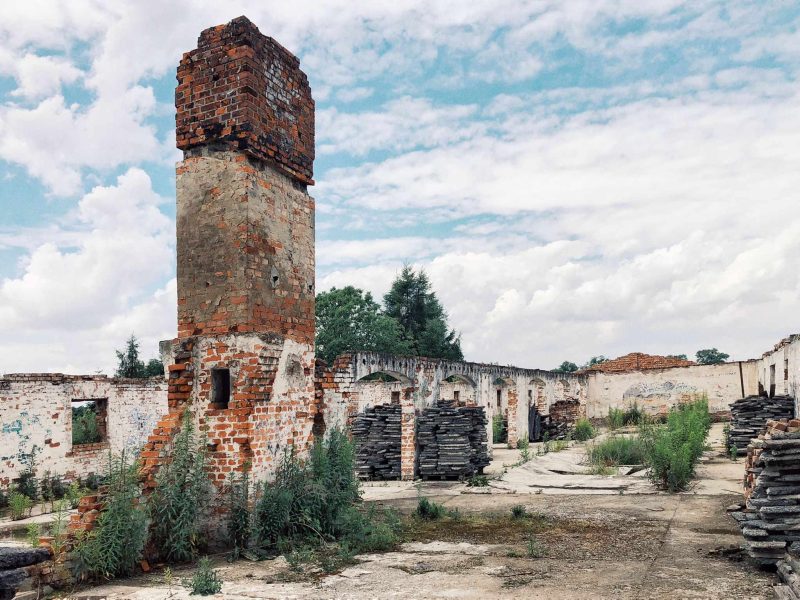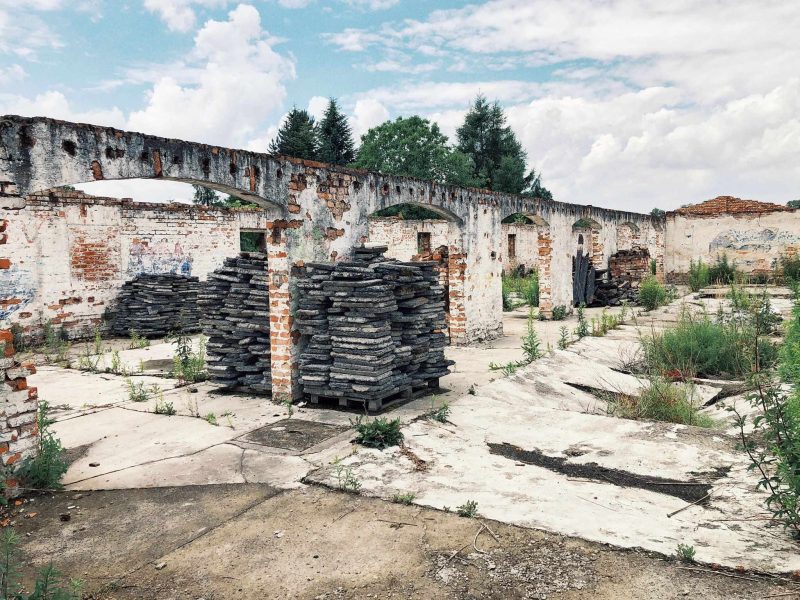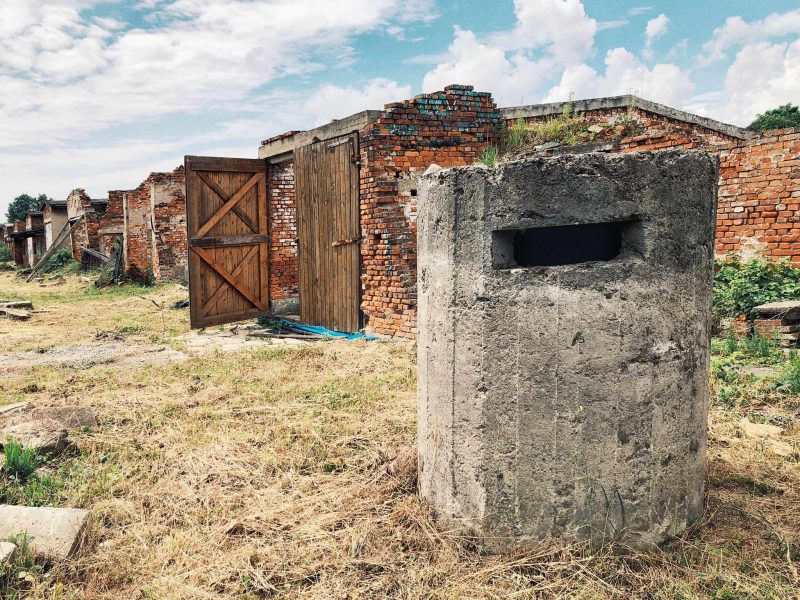Food Warehouses
Fünf Kartoffellagerhallen
This is a massive brick building constructed with forced slave labor by prisoners between 1942 and 1943. The structure, 250 meters long, consists of 10 halls, each with an area of almost 1,000 square meters. The name “Funf” (Five) refers only to the division by so-called firewalls. Each of these 10 halls has two entry gates on one side and two exit gates on the other side of the building for trucks carrying agricultural products. The entry system is a separate set of double gates operating on the principle of a sluice: after the outer gate was opened, a truck would drive into the corridor, the outer gate would be closed, and only then would the inner gate be opened. This was designed to maintain a unique internal microclimate and temperature suitable for storing vegetables. Between the entrances, on one side wall, there is a boiler room with two furnaces used to heat the building in winter, with an interestingly designed warm air ventilation system. On the other side of the entrances is a sanitation room with sinks and toilets (which, of course, were not for the prisoners; such were the sanitary requirements at the time for buildings where food was stored).
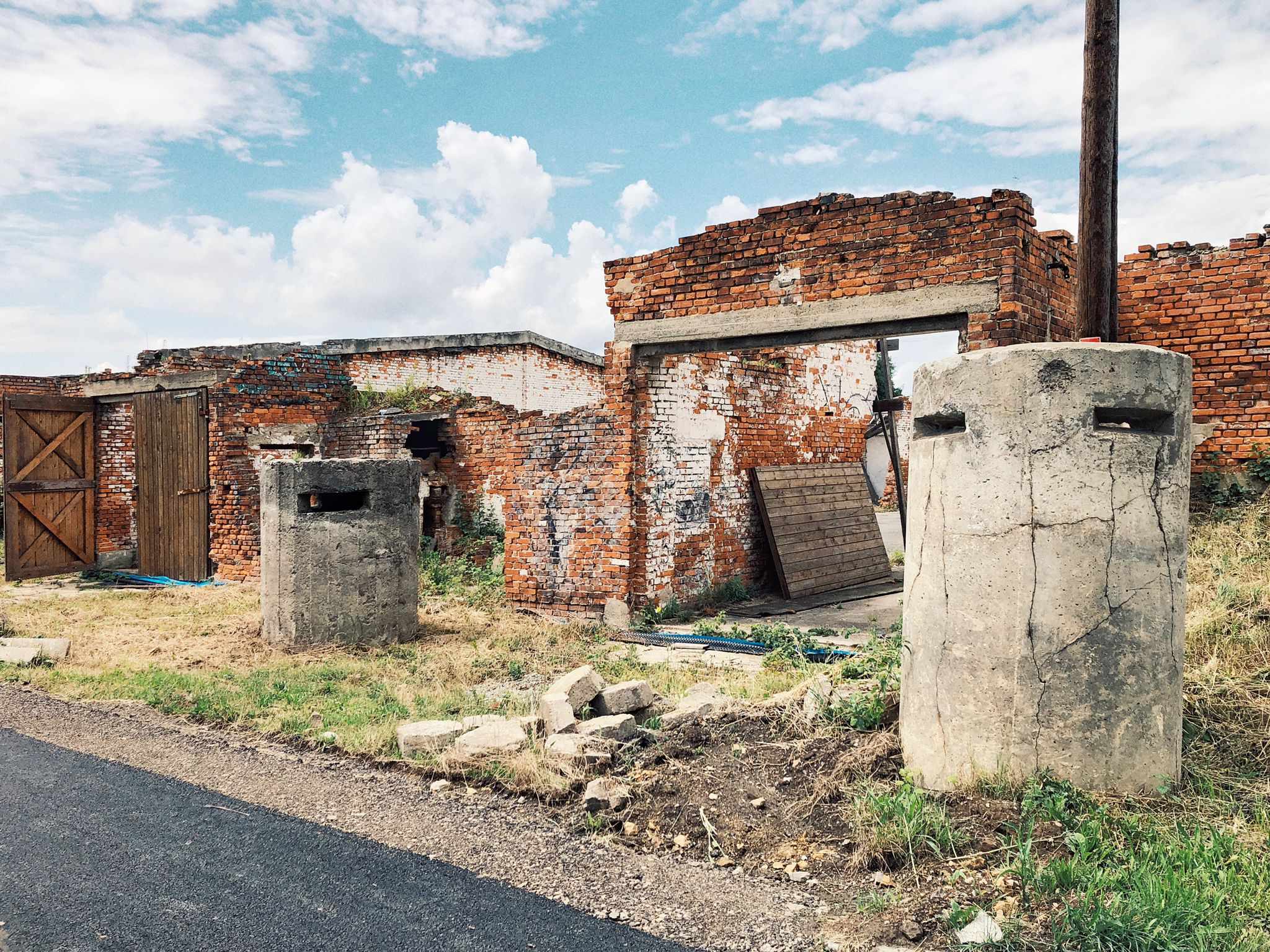
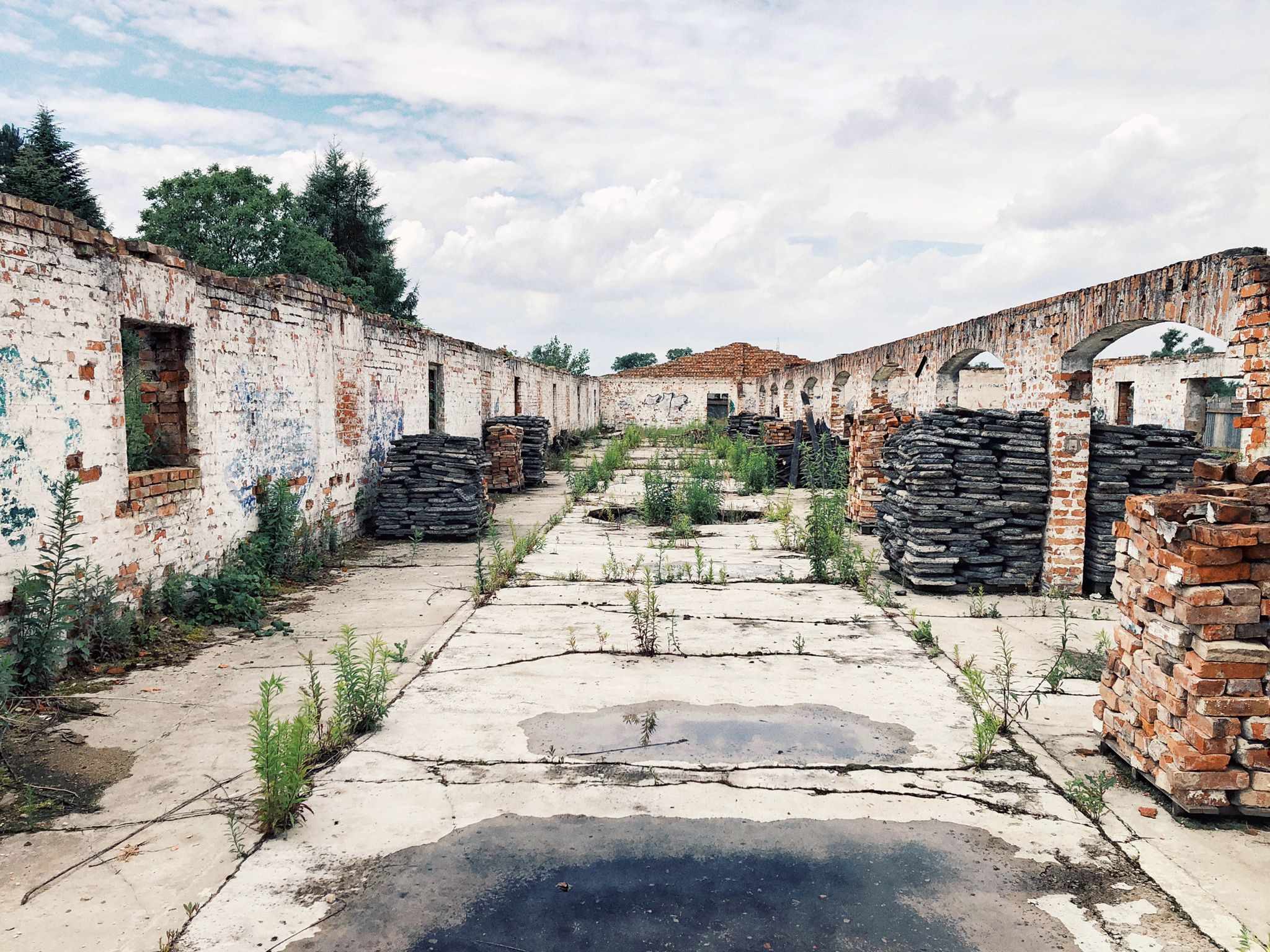
The entire building was designed based on the principle of a mirror reflection – what is located along one of the longest walls is also found along the other. Each hall, except for the four entrances, had four furnaces and two bathrooms. This building was primarily used for storing potatoes but also for rutabagas, onions, carrots, beets, etc. All these crops were obtained through the forced labor of prisoners, who worked without pay on a vast area of almost 50 km² of camp land, which had been created by displacing nearby villages and taking over farmland and livestock areas by SS camp authorities. It is difficult to determine how many tons of vegetables were stored at any one time, but as with the sauerkraut facility, most of the agricultural produce was intended for export and sale to the Reich by the SS camp authorities.
It was near this building that the selection of people brought in forced deportation transports from all over Nazi-occupied Europe took place. The functionality of this building (toilets, running water, and heating during winter) provided excellent social facilities for the SS men waiting for the deportation transports. The “Angel of Death” himself, Josef Mengele, conducted selections here from May 1943 to May 1944, also picking twins and interesting medical cases from at least several dozen deportation transports for his criminal experiments. It is important to remember that “selections” meant deciding whether someone was useful to the Third Reich or would be sent immediately to the gas chamber.
Both buildings, the sauerkraut facility and the potato warehouse, were located directly by the railway junction, which facilitated the transport of sold vegetables and sauerkraut in the opposite direction.
These two camp buildings and the prisoners working at them were the first things seen by people unloaded from the forced German deportation transports to Auschwitz. Both buildings are located in the area and zone of the Birkenau camp. No civilians were allowed to be there, and prisoners worked only under the direct supervision of armed SS guards watching over them.
Support Heritage – Create the Future
Support the Foundation
Your financial support is a drop that creates waves of change. Thanks to your generosity, we can continue our work by protecting important historical sites, conducting research, organizing educational events, and engaging the local community.
By clicking ‘Donate,’ you will be redirected to the PayPal page, where you can quickly make a donation to support the Foundation. You can also transfer funds directly to our bank account (details in the footer).
